
Vegetation Around Las Vegas

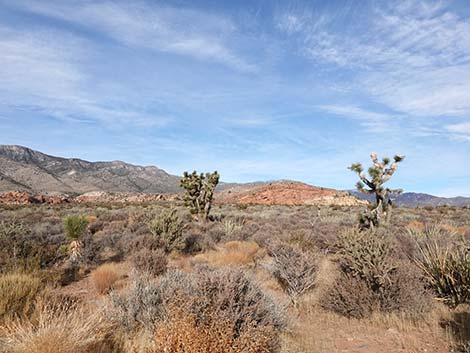 |
Mojave Desert Scrub (Upper Sonoran Life Zone; BLM Mojave Desert Scrub) Non-technical Description: A vast and diverse expanse of shrubs, Joshua trees, and cactus on desert uplands. Technical Description: The Mojave Desert Scrub association occurs throughout the Las Vegas area at mid-elevations on slopes, hillsides, and washes with alluvial soils at elevations of about 4,000 to 5,000 feet. The vegetation is dominated by creosote bush (Larrea tridentata) and a diverse mixture of other shrubs, cacti, and Joshua trees (Yucca brevifolia and Yucca jaegerana). |
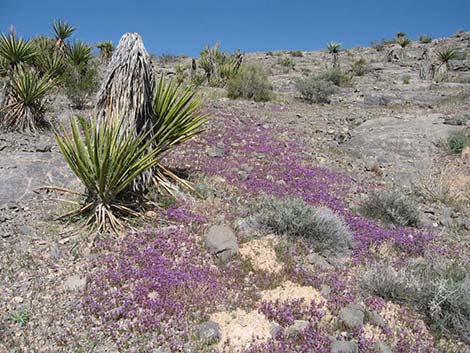 |
Creosote bush (Larrea tridentata) and white bursage (Ambrosia dumosa) are common and mixed with shrubs such as Nevada jointfir (Ephedra nevadensis), Fremont's dalea (Psorothamnus fremontii), several species of salt bush (Atriplex spp.), brittlebush (Encelia spp.), spiny menodora (Menodora spinescens), white burrobrush (Hymenoclea salsola), desert-thorn (Lycium spp.), spiny hopsage (Grayia spinosa), littleleaf ratany (Krameria erecta), Mormon tea (Ephedra viridus), and various species of rabbitbrush (Chrysothamnus spp.). A number of yucca and yucca-like species can be found here, including Joshua trees (Yucca brevifolia and Yucca jaegerana), Mojave yucca (Yucca schidigera), banana yucca (Yucca baccata), and soaptree yucca (Yucca elata). Utah agave (Agave utahensis) can be found in rocky areas, and Bigelow's nolina (Nolina bigelovii) is common in the Newberry Mountains south of Las Vegas. |
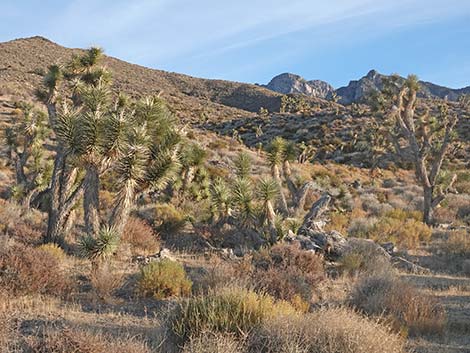 |
Several types of cactus are common in the Mojave Desert Scrub. Cholla (Cylindropuntia spp.) and pricklypear (Opuntia spp.) can be quite common, hedgehog cactus (Echinocereus spp.) can also be locally abundant, and pincushion cactus (Escobaria) and cottontop cactus (Echinocactus polycephalus) can be found occasionally. California barrel cactus (Ferocactus cylindraceus) also are uncommon, but usually they can be found in rocky areas and on the sides of limestone cliffs. A good place to see a number of cactus species is on the rocky limestone outcrops at the toe of Fossil Ridge in Red Rocks National Conservation Area. Park at the Cowboy Rides parking area and walk up the obvious trail on the closest ridge to the south. |
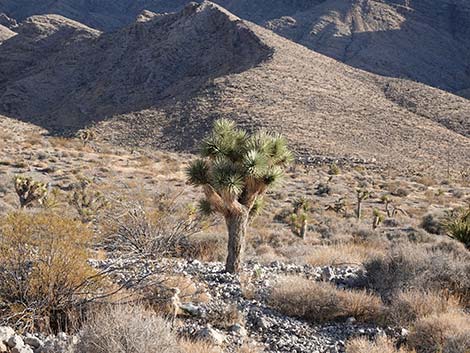 |
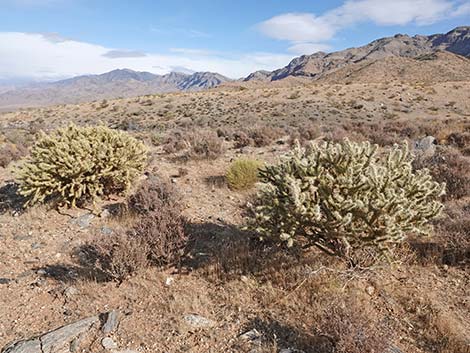 |
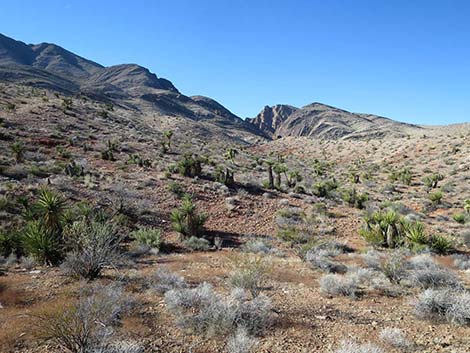 |
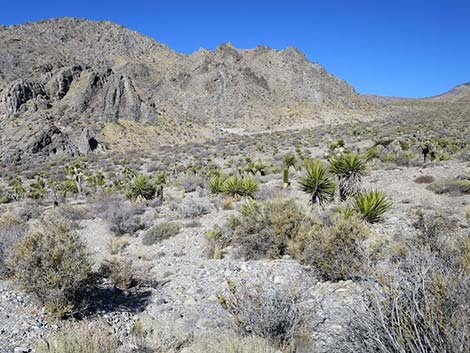 |
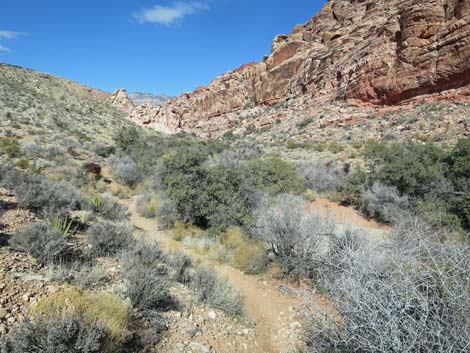 Calico Hills, Red Rock Canyon NCA |
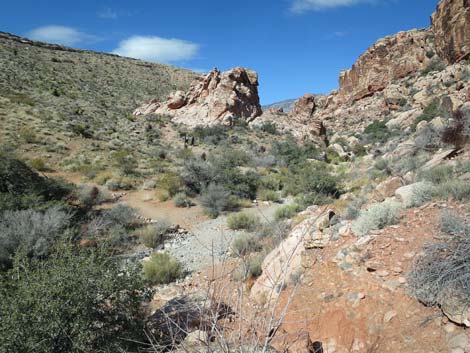 Calico Hills, Red Rock Canyon NCA |
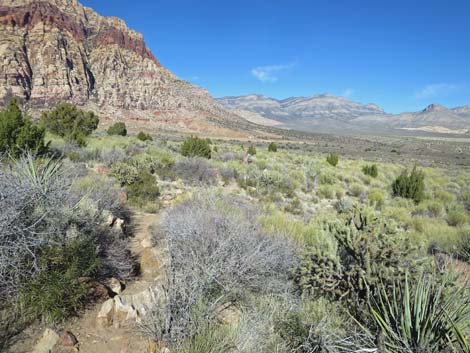 Arnight Trail, Red Rock Canyon NCA |
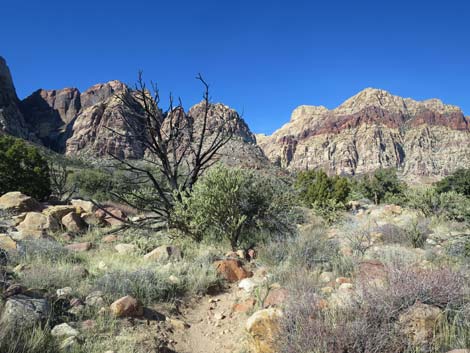 Arnight Trail, Red Rock Canyon NCA |
All distances, elevations, and other facts are approximate.
![]() ; Last updated 220111
; Last updated 220111
| Vegetation | Glossary | Copyright, Conditions, Disclaimer | Home |